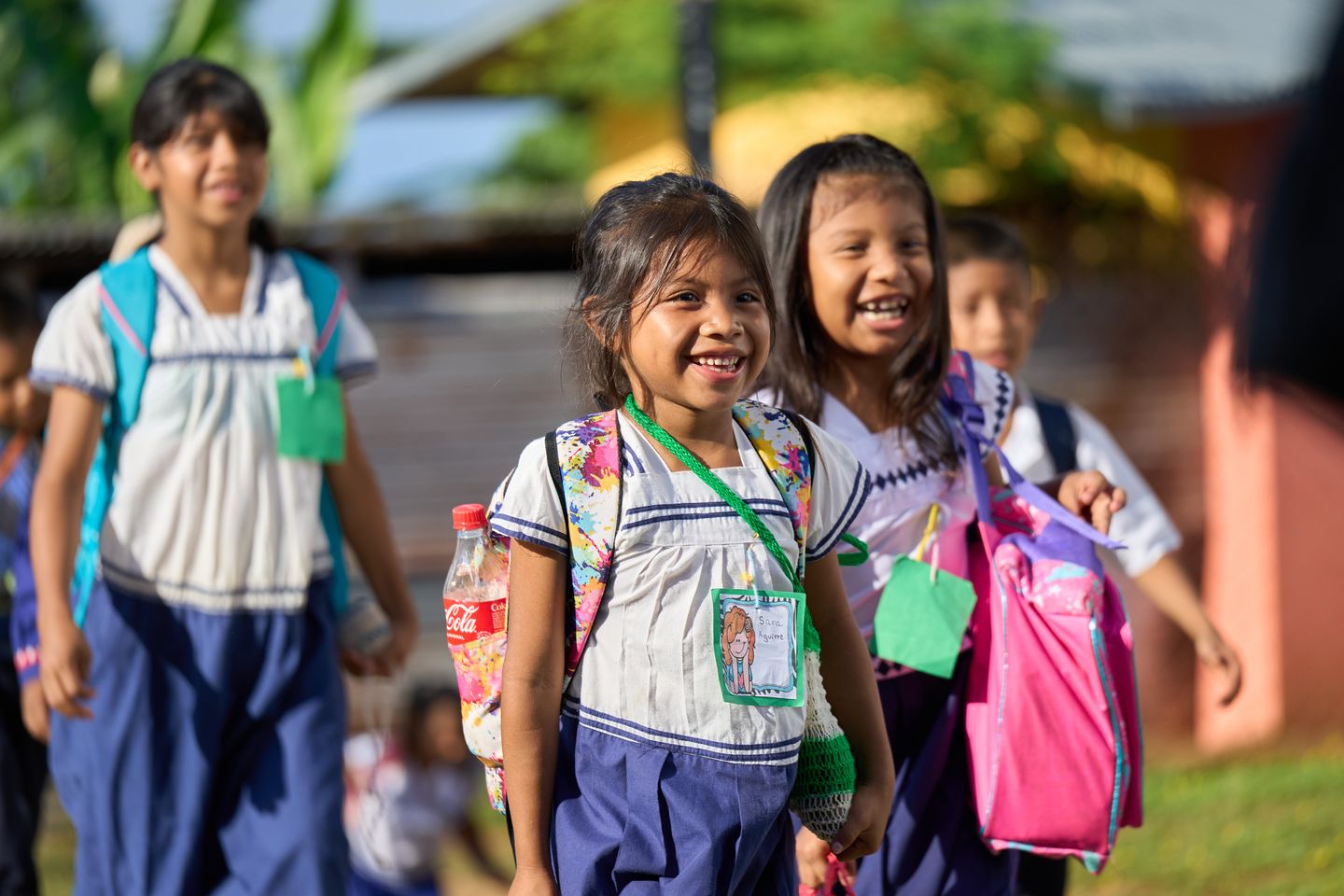
Imagine your first day of school. You feel nervous and uncertain. Will I make friends? Will I miss my parents? Your friendly new teacher greets you, but you don't understand her. She teaches you to count and suggests games, but in a different way than you count and play with your parents. She encourages you to learn, but only if you set aside your mother tongue and how your family interprets the world.
This classroom scenario is not hypothetical for most Indigenous students and their families in Latin America, who struggle with teachers who do not speak their language or know their culture.
When this situation is combined with Indigenous students lacking equal opportunities in enrollment, performance, and completion compared to their non-Indigenous peers, the result is a significant learning gap that increases vulnerabilities and widens inequality gaps in the region.
To address these challenges, the Ari Taen JADENKÄ program ("Count and Play" in the Ngäbere language) successfully reduced these gaps in students from the Ngabe community in Panama. It did this without forcing students to choose between learning over prioritizing their language and cultural heritage.
Learning gaps: The beginning of inequality for Indigenous students
There are around 420 Indigenous languages in Latin America. UNESCO calculates that at least 1 in 4 is at risk of extinction. When educational systems do not encourage their use, the students run the risk of losing part of their cultural richness.
Moreover, evidence shows significant disparities in outcomes. For example, in Panama, Indigenous preschoolers have math skills that are 25% below those of their non-Indigenous peers. In reading, this gap widens to 40%.
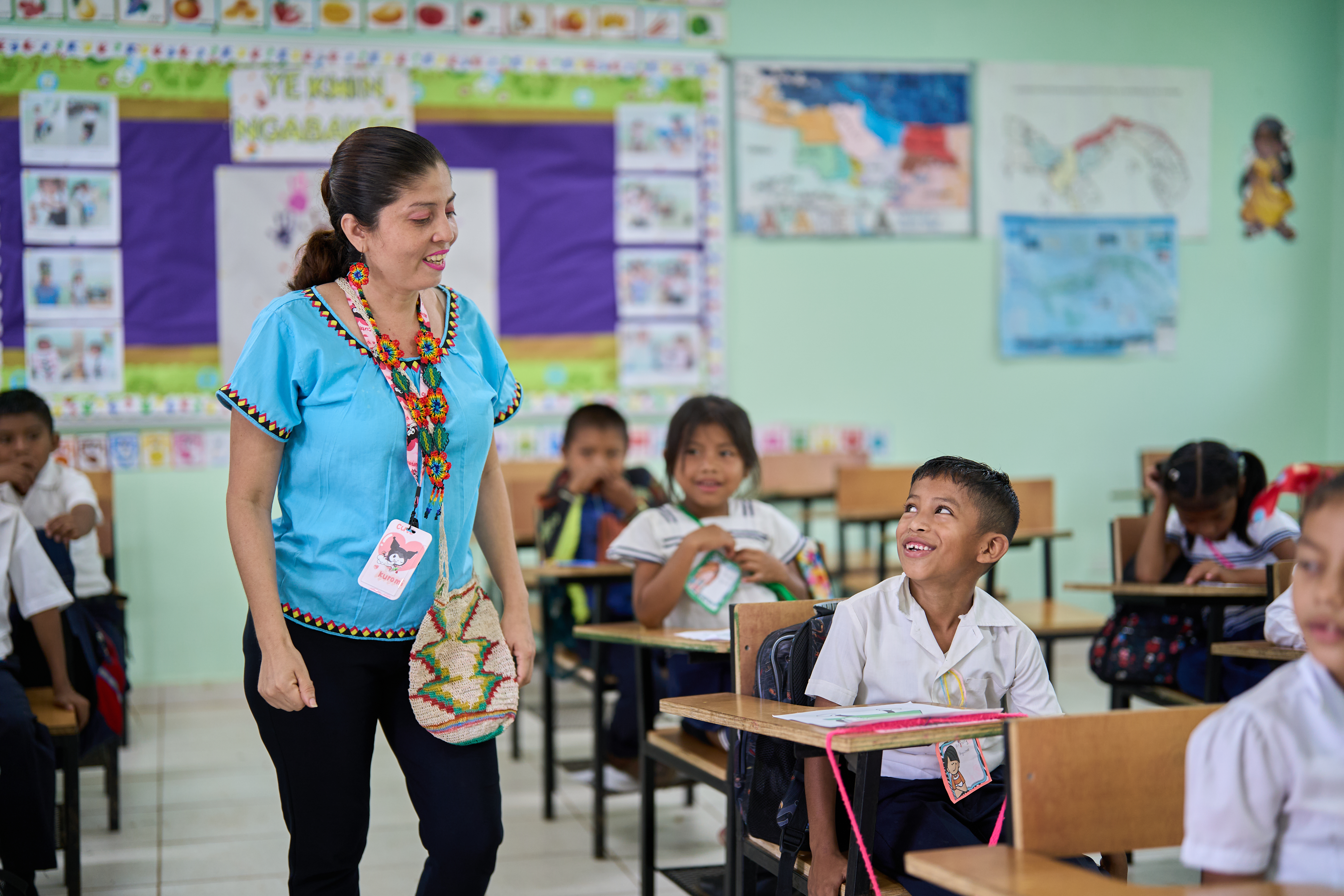
Second-grade teacher Cristina Pitty smiles with her student, Anthony Aguirre, during a class of the Jadenkä programme at the Centro Educativo Básico General Guary, Cerro Iglesias in the Ngäbe-Buglé Comarca.
Between 2010 and 2020, Indigenous children aged six to eleven had lower school attendance rates in 11 out of 17 Latin American and Caribbean countries. Access to secondary and higher education is even more unequal. This reality is the result of many difficulties.
Emma Naslund-Hadley, Lead Education Specialist at the Inter-American Development Bank, explains one of them: “We found that one of the biggest challenges in supporting the development of Indigenous communities was the shortage of teachers and the limited training in pedagogical skills and knowledge of the Indigenous culture and language that are needed to provide quality bilingual education.”
To fill that need, JADENKÄ emerged as a pedagogical initiative to standardize content and materials to guarantee quality education for all.
Bilingual and Intercultural Students
We know that children who grow up bilingual are more creative and have better memory, among other benefits. The students of JADENKÄ are also intercultural-bilingual, thanks to one of the richest aspects of the initiative: its cultural dimension. This is not simply a bilingual program that translates content; instead, it conceives education in a completely new way within an intercultural system. For this reason, it is called intercultural bilingual education.
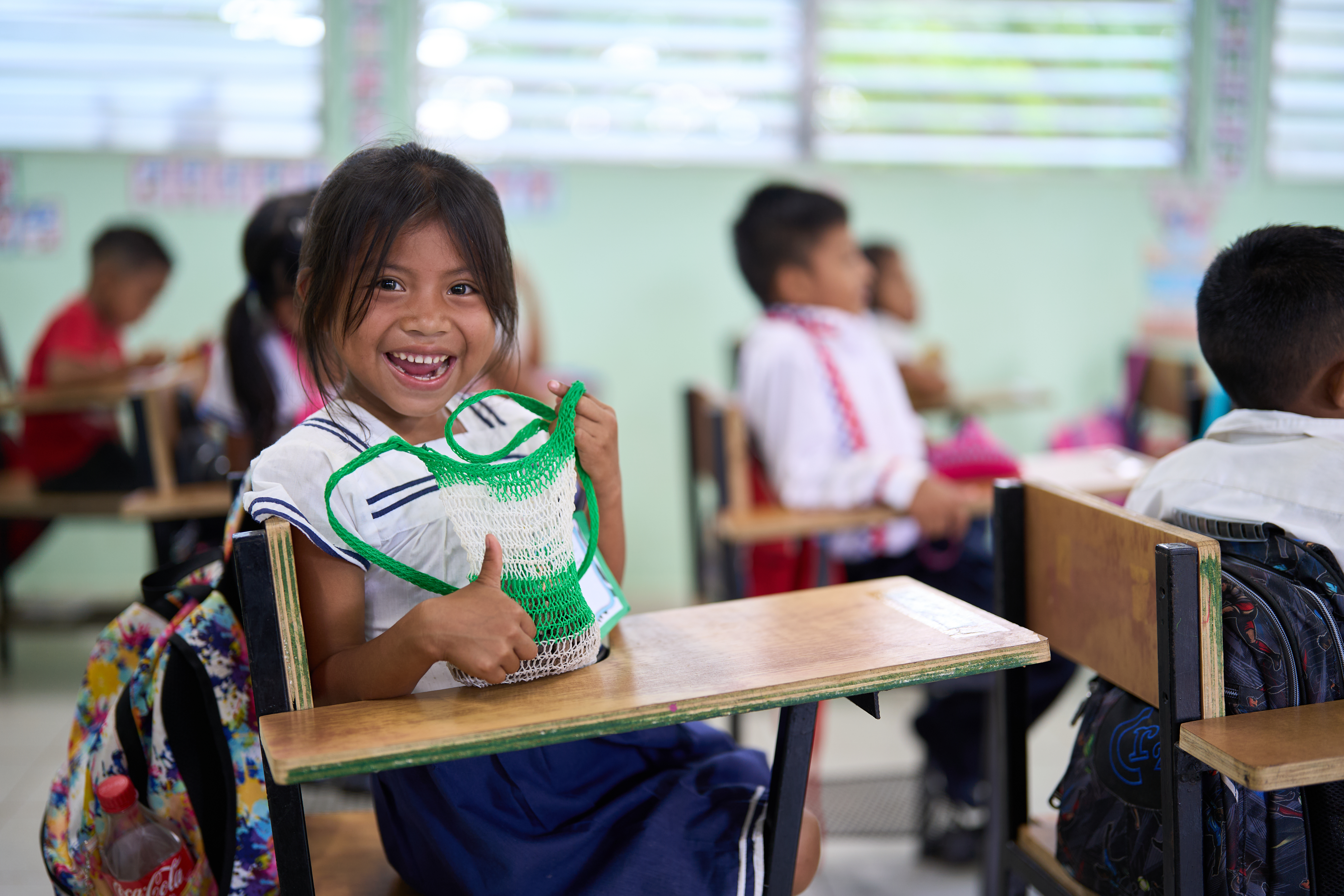
Sara Aguirre happily shows her crä (traditional bag) that is used in one of the dynamics of the Jadenkä programme.
How is intercultural bilingual education applied in practice?
Take the example of counting objects in Ngäbere, which, depending on the characteristics of what is being measured, has 14 ways of enumerating. For instance, counting an orange and a field is done differently. An orange is classified as round, so Kwa-ti-naran (an orange) is expressed as "round-thing-one-orange," and Kun-ti-neueva (a flat field) is defined as "flat-thing-one-field" because the flat aspect of the field is considered.
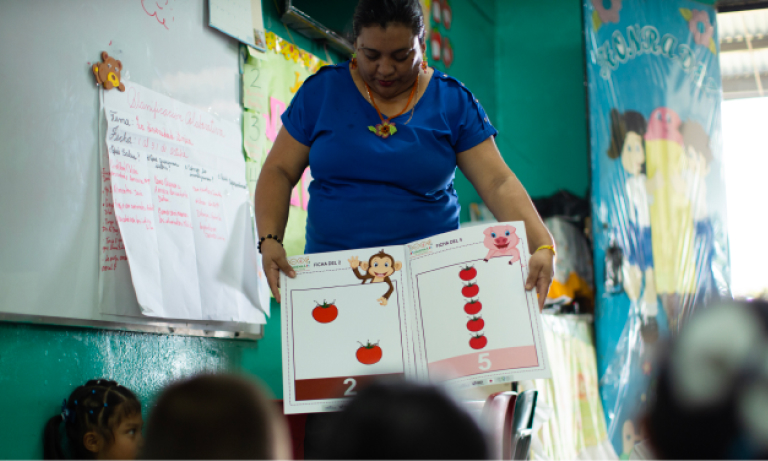
In Ngäbere, objects are counted in 14 different ways, depending on the characteristics of what is being counted. Source: IDB.
Through materials such as an interactive radio, stories, and activity booklets, JADENKÄ helps preschool-age children master five of the 14 numerical classifiers of Ngäbe and the basics of arithmetic and geometry.
One of the program's success factors is that it integrates the children's mother tongue – in this case, Ngäbere – with Spanish and combines intercultural mathematics with the teaching of Western mathematics.
Another aspect that makes JADENKÄ a unique program is that it helps develop early skills in children essential for learning mathematics in primary school, including shape recognition, counting objects, and numerical sequencing. In fact, comprehensive math lessons during preschool are unusual in Latin America.
The evidence guiding us in the future of education
Students who participated in JADENKÄ gained the equivalent of half a school year in mathematics without adding a single extra day of class. Additionally, there were benefits to the cultural identity of the students.
Not only did the students benefit, but their teachers also reported improved ethnomathematical competencies and increased knowledge of the Ngäbere language and culture.
“For me, it's fun because, through songs and games, we learn not only math but other areas that are part of the preschool program. I don't speak their dialect (...) I'm learning with my students," says Rosario Rodríguez, a preschool teacher at Flor de Anís school. "I encourage them to ask at home, to have conversations in their language so that they can teach me here what they have learned there.”
The program gained international recognition by receiving the prestigious Khalifa Award.
JADENKÄ emerged as a collaboration between the Inter-American Development Bank (IDB), the Organization of Ibero-American States (OEI), the Ministry of Education of Panama, and the organization Innovations for Poverty Action (IPA).
The program is the world's first randomized experiment of intercultural bilingual mathematics education at the preschool level. Thanks to the positive results, the team is working on scaling the initiative to other educational levels and languages. By 2024, the program is expected to be available in Quechua.
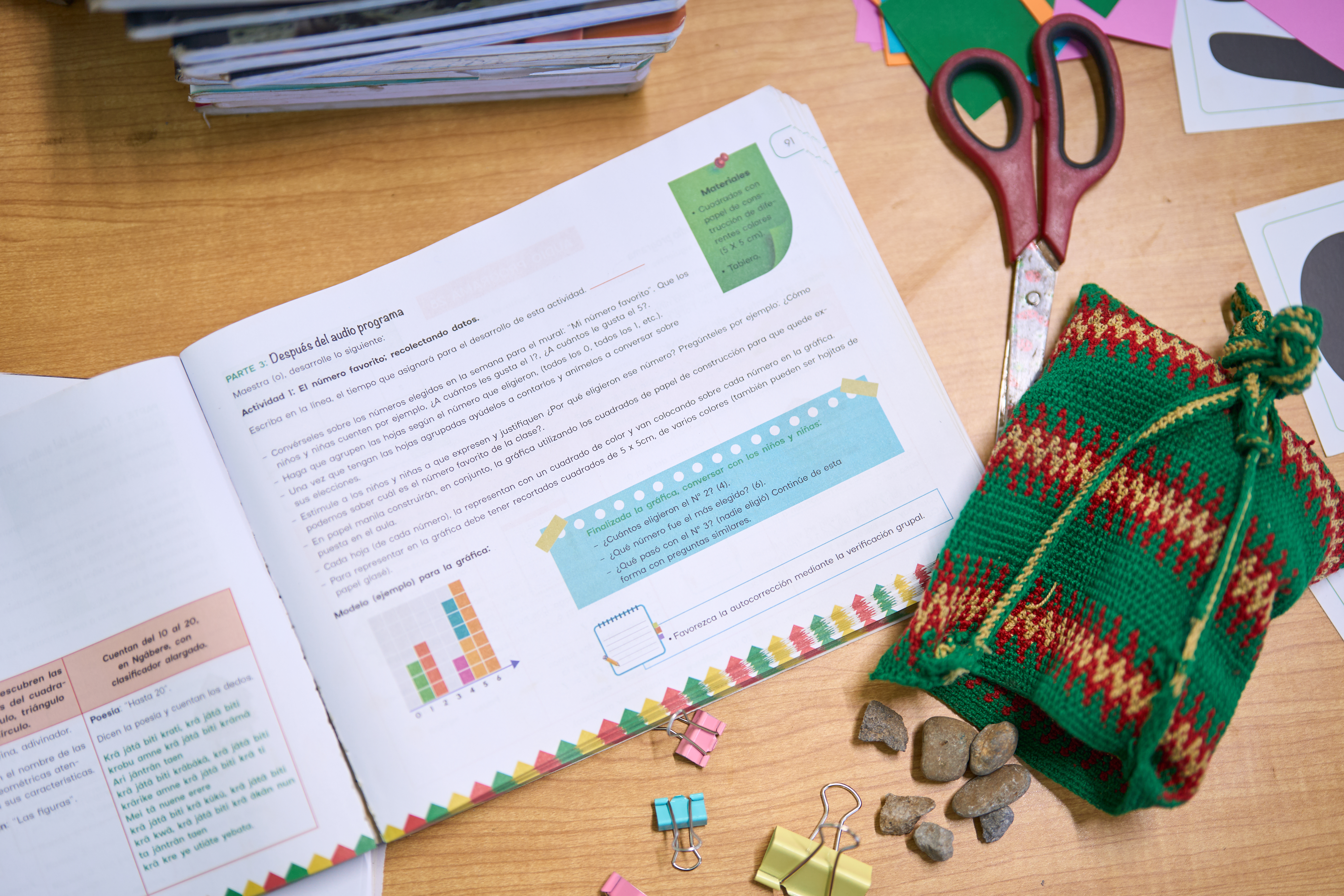
Book of the Jadenkä programme, which seeks to teach the Ngäbere (native language), with a crä (traditional bag) that is used with stones (counters) to teach mathematics as part of the dynamics.